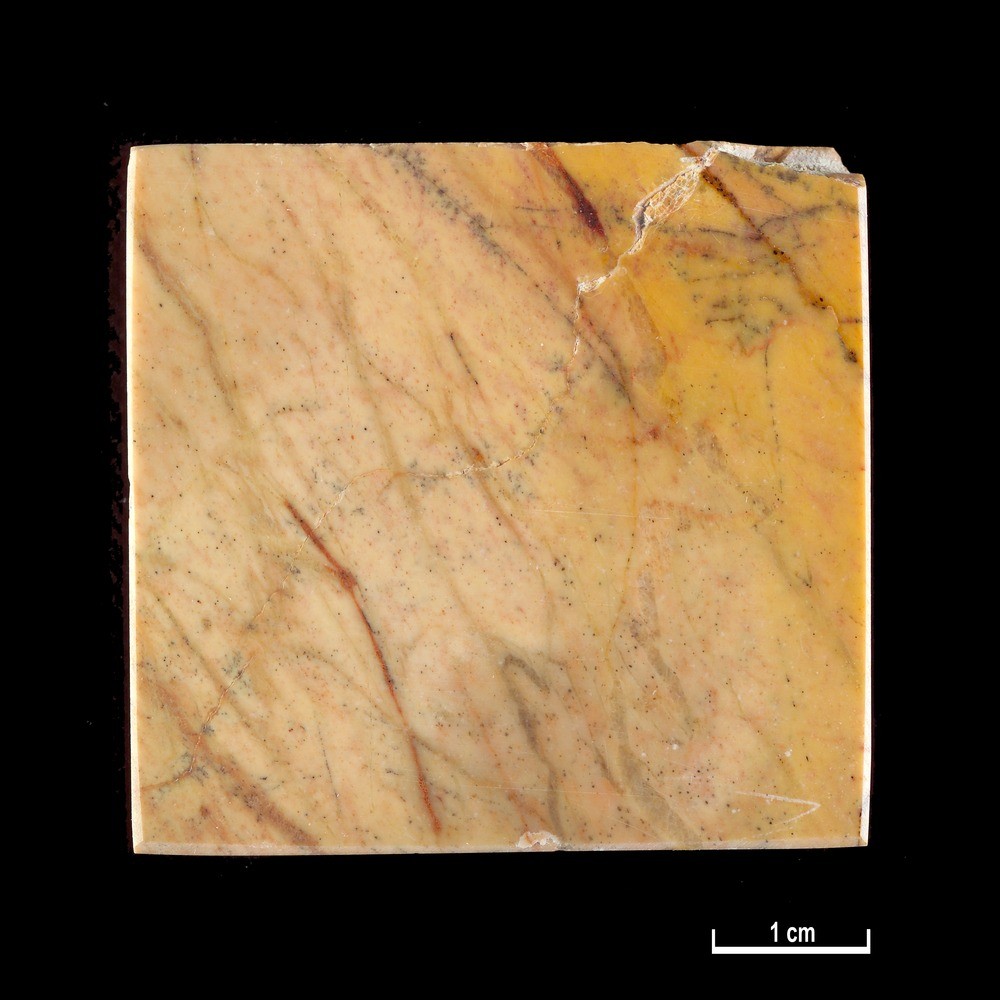| P number: | P576082 |
|---|---|
| Caption: | Marble specimen. Giallo Antico. Chemtou Quarries, Medjerda Valley, Tunis. |
| Description: |
Label name: Giallo Antico. Alternative name: Giallo Antico. Specimen description: Yellow containing many brown, red and grey veins. Text from: Watson, J. British and foreign marbles and other ornamental stones. Cambridge : University Press, 1916. 497 GIALLO ANTICO. Chemtou Quarries, Medjerda Valley, Tunis. This specimen represents one of the varieties of Numidian Marble which is found in Tunis. It is a shattered limestone of a rich yellow tone, displaying veins of brown and grey, and it will be noticed that the specimen has a wide vein running through it filled with angular fragments of the matrix in a reddish brown cement. Many instances of the use of this variety of Numidian Marble may be seen in Rome. Fluted columns of Giallo Antico are in the Pantheon, and part of the pavement is also laid with it. There are seven columns composed of it in the Arch of Constantine, and one in the Lateran Basilica. These eight pillars are believed to have been taken from the Arch of Traj an. Marcus Lepidus, Consul of Rome in 46 B.C., used Numidian Marble for the lintels of his house. The lower part of the wall of the Porticus of the Flavian Palace on the Palatine Hill is lined with Giallo Antico; and the fluted columns which surround the peristyle of the Temple of Apollo are also composed of it. Large blocks of this marble were found at the Emporium near the Marmorata, in the excavations of 1870. The white marble pavement in the west gynaeceum of the ancient Byzantine Church of St Sophia, Constantinople, is fringed with. an inlaid edging of Giallo Antico. With the downfall of Imperial Rome the quarries ceased to be worked, and the source from which this marble was obtained was lost for many centuries. Their position was accidentally rediscovered when the railway between Algeria and Tunis was under construction, and proofs of their ancient activity were disclosed. Monoliths were found partially quarried and roughly hewn into shape, among which was one twenty-four feet long. The quarries are again in operation, and the marble is sent to all parts of the world for decorative purposes. It is put on rail at Oued-Meliz, a station on the Algeria and Tunis Railway, and thence conveyed to Tunis or Bona for shipment. Examples of its use may be seen in London; for instance, the staircase of the National Gallery is embellished with it. It was employed for forming the mosaic work that decorates the reredos of Ely Cathedral, and in 1895 it was employed for making the Opus Alexandrinum pavement in the chancel of Bristol Cathedral. In France it is known among marble workers as Jaune Antique. |
| Date taken: | Thu Jan 01 00:00:00 GMT 2004 |
| Photographer: | McIntyre, B.M. |
| Copyright statement: | NERC |
| Additional information: | The marble is from the Walter Brown Collection, Scottish Mineral and Lapidary Club. |
| Orientation: | Square |
| Size: | 163.04 KB; 1000 x 1000 pixels; 85 x 85 mm (print at 300 DPI); 265 x 265 mm (screen at 96 DPI); |
| Average Rating: | Not yet rated |
| Categories: | Unsorted Images |
Reviews
There is currently no feedback

